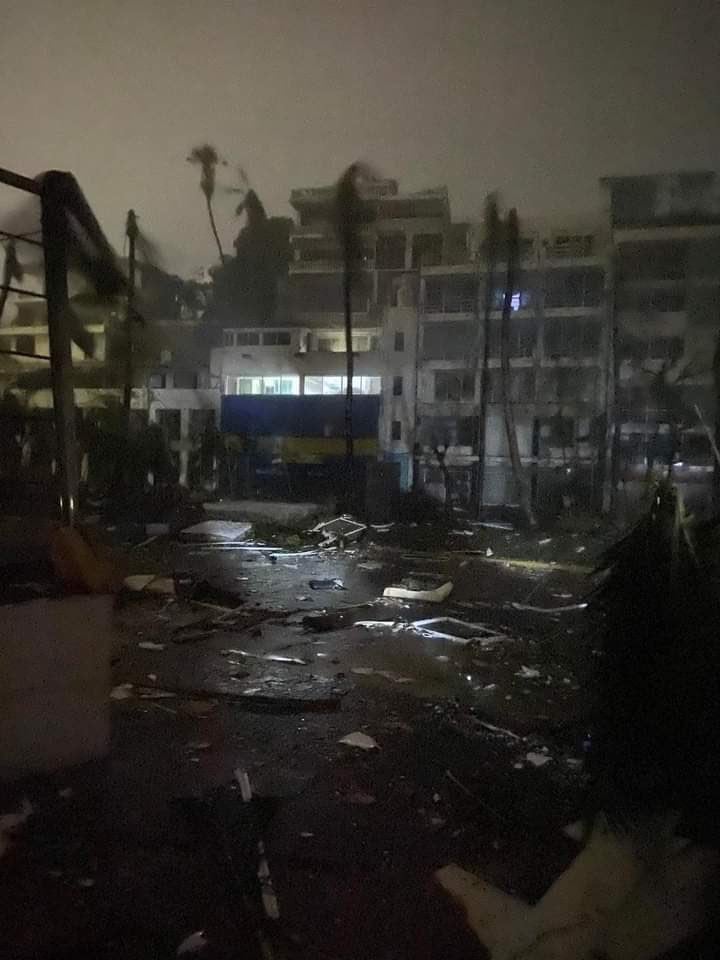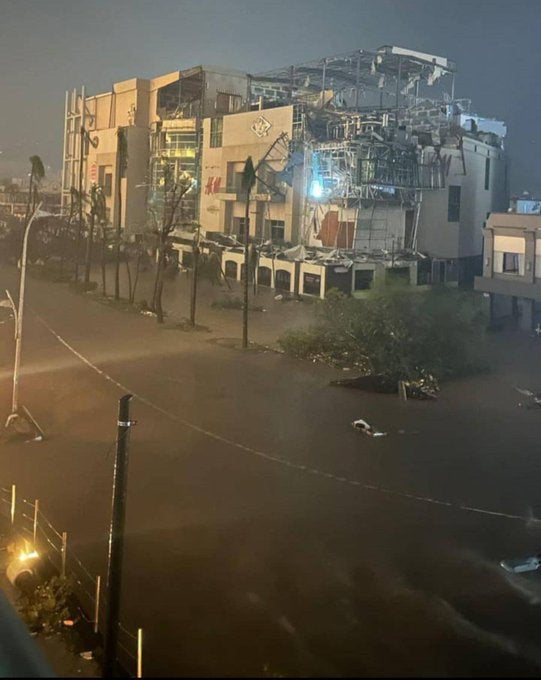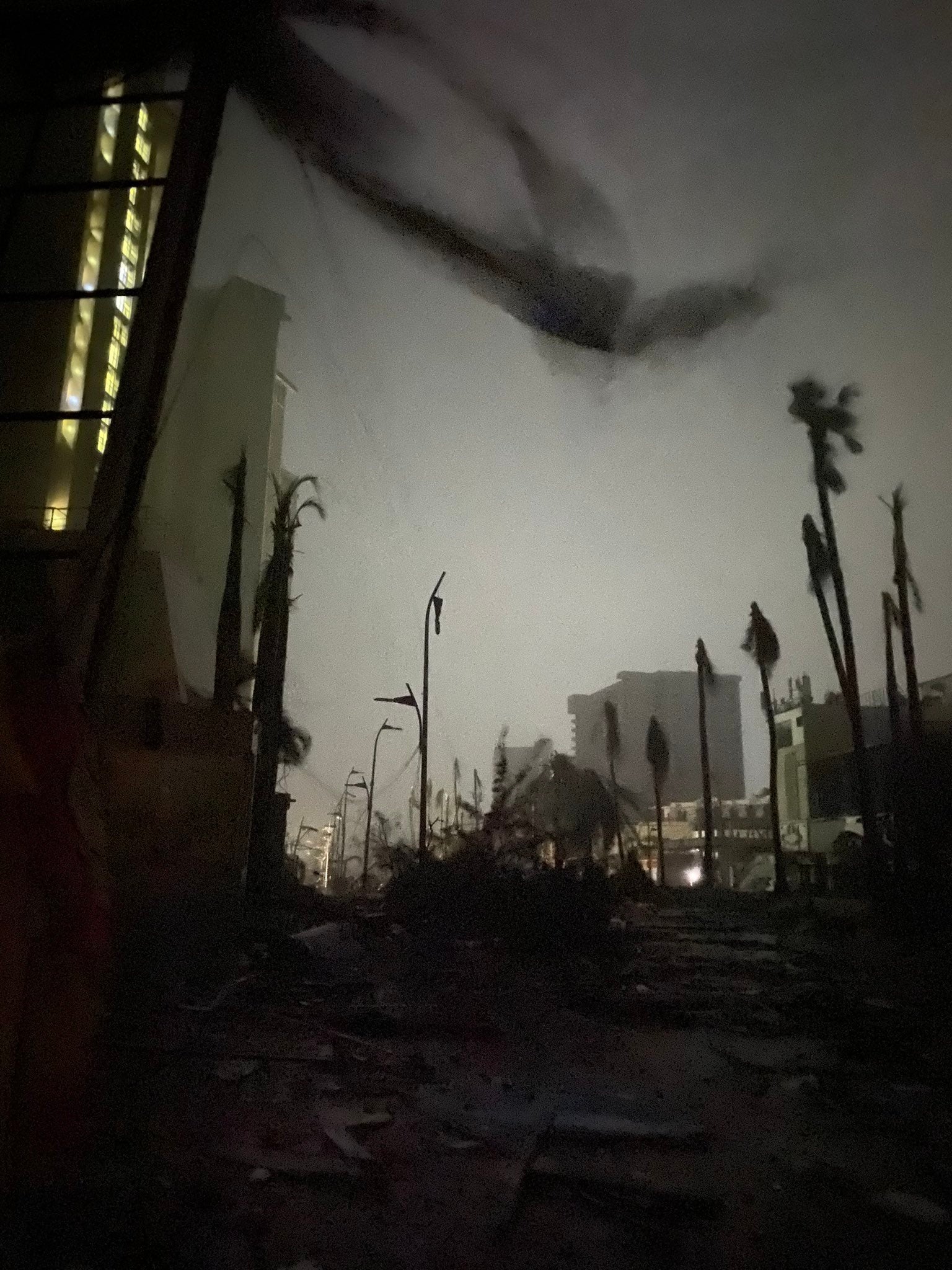Hurricane Otis slammed into Mexico Wednesday morning as the strongest storm to land on the country’s west coast, leaving destruction and power outages in its wake.
Otis went from a Category 1 to a Category 5 storm in only 12 hours — the fastest rate ever recorded in the Eastern Pacific Ocean.
The eye of the storm made landfall close to the resort town of Acapulco with winds of 165mph. Forecasters described it as “a nightmare scenario” for southern Mexico.
Videos from the scene showed palm trees stripped bare of their leaves and badly damaged buildings including a hospital and shopping centre.
Residents were left without power or access to roads that lead outside the city due to landslides caused by the torrential rain.
The storm had lost strength by Wednesday afternoon and was downgraded to a tropical storm as it moved past the Guerrero state. But soon after a 4.4-magnitude earthquake shook a resort town just 120 miles north of Acapulco.
Acapulco cut off by Cat-5 Hurricane Otis which caught forecasters by surprise
A “nightmare scenario” struck shortly after midnight in the coastal city of Acapulco on Wednesday.
Hurricane Otis roared ashore in southern Mexico, the strongest-ever storm to make landfall on the country’s west coast.
The hurricane underwent explosive intensification from a Category 1 to a Category 5 in just 12 hours in the Eastern Pacific Ocean, catching forecasters by surprise. The National Hurricane Center (NHC) described it as a “nightmare scenario” for the region.
The storm made landfall with 165mph winds and torrential rain of up to 15 inches in places.
Read more here:
Earthquake detected in resort city hours after Otis
A 4.4-magnitude earthquake was detected in the resort city of Zihuatanejo – just 120 miles north of Acapulco – hours after Otis caused massive destruction to the southern part of Mexico’s Pacific coast.
A preliminary evaluation of the area was conducted by state and municipal personnel in the area, the Mexican civil protection coordination agency said.
Residents were not warned of the earthquake because the seismic system used to warn people was unable to operate.
SkyAlerts – the early earthquake-warning service, said damage left behind from Otis had left their infrastructure “temporarily inoperative”.
Otis now a tropical storm
The Category 5 hurricane that lashed through parts of Mexico’s Pacific coast was downgraded to a tropical storm, just hours after it made landfall.
The National Hurricane Center (NHC) said maximum wind speeds were around 60 mph on Wednesday afternoon.
It was located around 130 miles North / North-West of Acapulco.
A Tropical Storm Warning is in effect for Punta Maldonado and Acapulco.
“A Tropical Storm Warning means that tropical storm conditions are expected somewhere within the warning area,” the NHC wrote.
After Hurricane Otis landslides threaten residents
Residents of Acapulco were unable to leave the town on Wednesday after rains brought by Hurricane Otis caused landslides on the highway.
The Secretary of Infrastructure for the Mexican state of Guerrero said on Twitter that a section of the Acapulco Highway, Chilpancingo faced “total closure” due to the landslides.
There are no alternative routes to leave the area, meaning residents will have to remain at their homes until the landslides are cleared.
They urged people to take precautionary measures.
In Oceania: A powerful cyclone made landfall in Vanuatu
A tropical cyclone that picked up strength made landfall on the island nation of Vanuatu on Tuesday.
The cyclone, named Lola, had the power equivalent to a Category 3 hurricane when it hit the country. The Vanuatu Meteorology Department said the cyclone’s wind speeds were over 100 mph with gusts over 115 mph.
Vanuatu Red Cross spokesperson Shirley Johnson told AccuWeather they were “expecting to have major, major damage.”
“I am afraid we won’t have enough relief in time to save the people,” Ms Johnson said.
Half a million Guerrero residents without power
After Hurricane Otis pummeled parts of Mexico on Wednesday, over a third of electric customers in Guerrero were left without power.
Comisión Federal de Electricidad, the state-owned Mexican electrical provider company, said more than 504,000 residents woke up without power but they managed to restore 40 per cent of its customers.
A team of 846 electrical workers, 96 cranes, 347 vehicles, 26 emergency plants and 1 helicopter assisted in the company’s quick response to the power outages.
Where will Hurricane Otis hit next?
Hurricane Otis made landfall close to Acapulco, Mexico in the early hours of Wednesday after rapidly intensifying from a Category 1 to Category 5 storm in just 12 hours.
The hurricane had weakened to a Cat-2 and was moving inland by Wednesday afternoon. The storm is now around 100 miles northwest of Acapulco.
It is expected to lose even more power as it hits Guerrero state’s steep mountains, before dissipating on Wednesday night.
The Mexican government discontinued a hurricane warning for Acapulco but issued a tropical storm warning for Punta Maldonado, around 100 miles to the south.
Read more here:
Watch: Hurricane Otis makes landfall as 165mph winds hit Mexico
No immediate reports of fatalities from Hurricane Otis
President Andres Manuel Lopez Obrador said there were no immediate reports of fatalities from Hurricane Otis, but cautioned that authorities were struggling to get updates.
“The hurricane is still affecting the area and communications are completely down,” he told reporters at a regular government press conference.
In pictures: Destruction caused by Hurricane Otis

Winds of up to 165mph are battering the Mexican city of Acapulco

Winds of 165mph destroyed the Galerias shopping center in Acapulco

Authorities warned of ‘catastrophic damage’ cased by Hurricane Otis
https://news.google.com/rss/articles/CBMiamh0dHBzOi8vd3d3LmluZGVwZW5kZW50LmNvLnVrL2NsaW1hdGUtY2hhbmdlL25ld3Mvb3Rpcy1odXJyaWNhbmUtdHJhY2tlci1hY2FwdWxjby1tZXhpY28tbWFwLWIyNDM1NTIxLmh0bWzSAQA?oc=5
2023-10-25 21:03:58Z
2551607606

Tidak ada komentar:
Posting Komentar